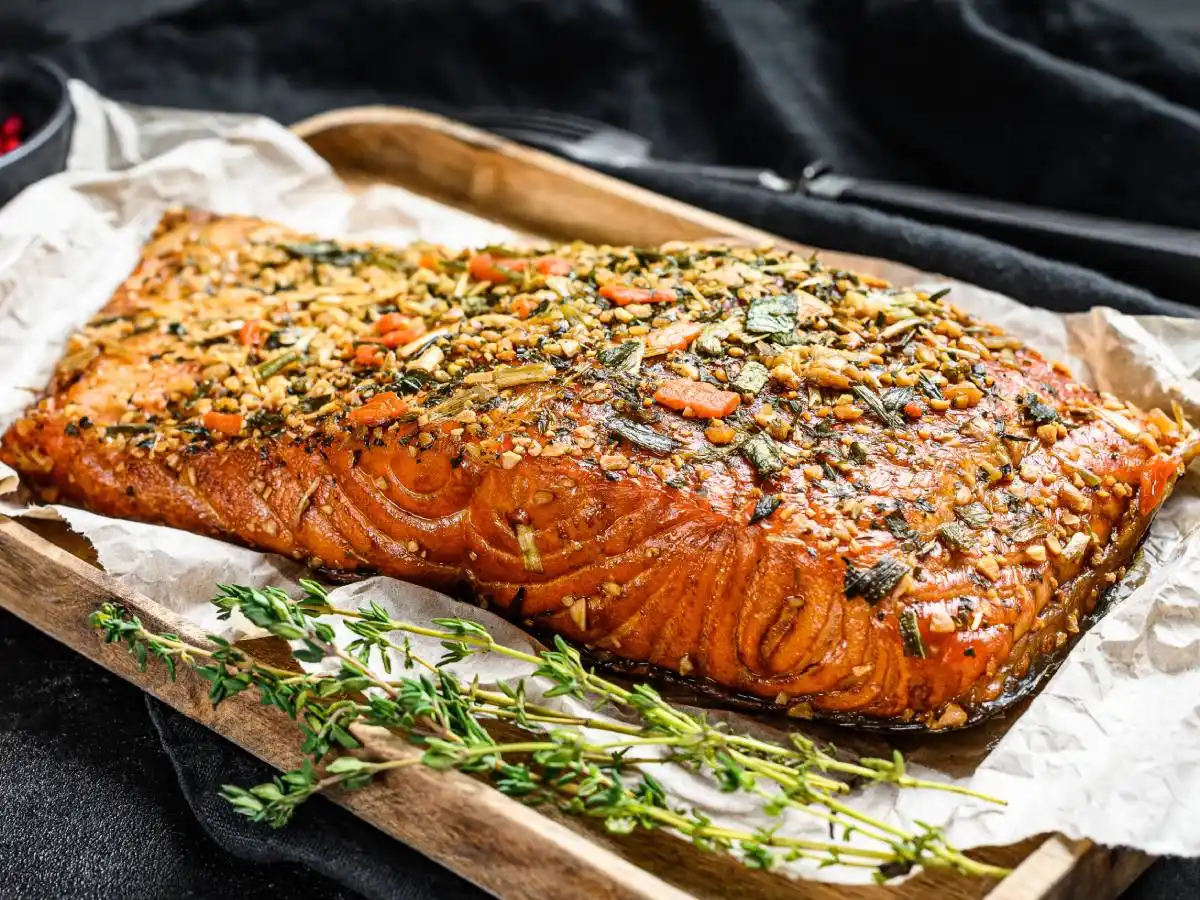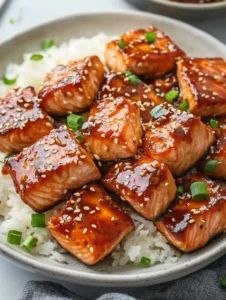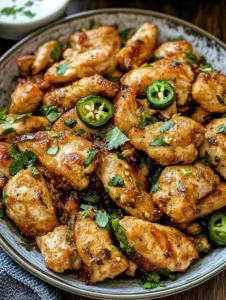How long does it take to cook salmon at 400? Salmon, a culinary favorite for many, is not just a dish; it’s an experience. The rich, buttery texture and the versatility it brings to the table make it a go-to for both weeknight dinners and special occasions. But, let’s face it, cooking salmon can sometimes feel like walking a tightrope. Too little, and it’s sushi; too much, and you’re left with a dry, disappointing plate. The question that often looms large is, “How long does it take to cook salmon at 400 degrees?” Well, you’re in luck! This article is your all-access pass to mastering the art of cooking salmon perfectly, every single time. From understanding the safe internal temperature to exploring various cooking methods and tips for seasoning, we’ve got you covered. So, let’s dive in and unravel the secrets to cooking salmon flawlessly at 400 degrees.

Introduction to Cooking Salmon
Ah, salmon! This majestic fish, with its vibrant hue and succulent flesh, is a true treasure of the sea. Rich in omega-3 fatty acids and packed with protein, salmon is not just delicious but also incredibly nutritious. But, as with all treasures, unlocking the best in salmon requires a bit of know-how. Whether you’re a seasoned chef or a kitchen newbie, understanding the basics of cooking salmon is key to achieving that perfect balance of flaky and moist. – How long does it take to cook salmon at 400? –
Introduction
Cooking salmon can seem daunting at first. However, with a few tricks up your sleeve, you’ll find it’s surprisingly simple. The beauty of salmon lies in its flexibility. Whether oven-baked, grilled, pan-seared, or air-fried, salmon can adapt to your culinary desires, making it a fantastic option for any meal. But before we get into the nitty-gritty of cooking times and temperatures, let’s talk about why salmon deserves a spot on your dinner table.
Salmon’s versatility is unmatched. It pairs beautifully with a wide range of flavors—from the boldness of garlic and dill to the subtlety of lemon and thyme. Plus, its quick cooking time makes it an ideal candidate for those busy weeknights when time is of the essence. But, as with any great dish, the secret to perfection lies in the details. And that’s exactly what we’re here to explore.
Stay tuned as we embark on this culinary journey, where we’ll uncover the secrets to cooking salmon perfectly at 400 degrees. From preparation tips to cooking techniques, we’re about to make your salmon adventures both delicious and foolproof. So, grab your aprons, and let’s get started!
Understanding Salmon Cooking Times
Cooking salmon to perfection is an art that marries precision with intuition. To ensure your salmon is just right, understanding the safe internal temperature and how various factors affect cooking time is crucial. Let’s dive into the details that make all the difference.
Safe Internal Temperature for Salmon
According to the USDA, the magic number for fish and shellfish is an internal temperature of 145 degrees F (63 degrees C). However, for those who prefer their salmon a bit more tender and moist, aiming for an internal temperature of 130 degrees F (54 degrees C) might be your sweet spot. The key here is to let the salmon rest for a few minutes after cooking. During this time, the temperature continues to rise slightly, bringing it to perfect doneness. Remember, a reliable meat thermometer is your best friend in this endeavor. It takes the guesswork out of the equation, ensuring your salmon is cooked safely and to your liking.
Factors Affecting Cooking Time
Not all salmon fillets are created equal. Their thickness, whether they’re fresh or frozen, and even the type of salmon can affect how long they need to be in the oven. Here’s a quick rundown:
- Thickness of Fillets: Thicker fillets require more time in the oven. A good rule of thumb is to cook your salmon for 4-6 minutes per half-inch of thickness.
- Fresh vs. Frozen: If you’re cooking salmon straight from the freezer, add about 50% more cooking time. This ensures the middle is cooked through without drying out the exterior.
Understanding these factors allows you to adjust cooking times for different situations, ensuring your salmon is always cooked to perfection.
Now that we’ve covered the essentials of salmon cooking times and temperatures, you’re well on your way to becoming a salmon-cooking maestro. But, as they say, knowledge is power, and in the next section, we’ll explore how to apply this power through the oven cooking method. Stay tuned as we delve into the world of oven-baked salmon, where convenience meets deliciousness.
Oven Cooking Method
The oven is a marvel when it comes to cooking salmon. It’s like a magic box where you place your seasoned fillet, set the timer, and voilà, you’re rewarded with a perfectly cooked piece of fish. Let’s break down the steps to achieve that ideal oven-baked salmon at 400 degrees.
How to Cook Salmon in the Oven at 400
Cooking salmon in the oven is a breeze, and doing it at 400 degrees ensures a quick yet gentle cooking process that locks in moisture and flavor. Here’s how to do it:
- Preparing the Salmon: Start by patting your salmon fillets dry with paper towels. This helps the seasoning stick better and promotes a slightly crisp exterior. Drizzle a bit of olive oil over each fillet and rub it all over. This not only adds flavor but also prevents sticking. Season your salmon with your choice of spices. Salt, pepper, lemon zest, dill, and garlic powder are all excellent choices.
- Step-by-step Cooking Instructions:
- Preheat your oven to 400 degrees F. If you have a convection setting, use it to promote even cooking and browning.
- Line a baking sheet with parchment paper or lightly grease it to prevent the salmon from sticking.
- Place the salmon fillets on the baking sheet, skin-side down. This allows the flesh to cook evenly without the skin sticking to the pan.
- Bake in the preheated oven for about 12-15 minutes, or until the salmon easily flakes with a fork. Remember, the exact time will depend on the thickness of your fillets.
How long does it take to cook salmon at 400?
Benefits of Oven Cooking
Oven-baking salmon at 400 degrees comes with a host of benefits:
- Even Cooking: The oven’s consistent temperature ensures that the salmon cooks evenly, providing a uniform texture throughout.
- Convenience: Once the salmon is in the oven, you’re free to prepare sides or simply relax. There’s no need to stand over the stove, flipping or monitoring.
- Versatility: The oven allows you to play with flavors. You can add a splash of white wine, lay lemon slices atop your fillets, or create a foil packet to steam the salmon with your favorite herbs.
Oven-baked salmon is not just a meal; it’s a testament to the simplicity and beauty of cooking with care. As we move forward, remember that the journey through culinary excellence doesn’t stop here. In the next sections, we’ll explore alternative cooking methods that bring out the best in salmon, each offering its unique twist on this beloved fish. Stay tuned, as the adventure in salmon cooking continues!
Alternative Cooking Methods
While the oven is a steadfast ally in the quest for perfectly cooked salmon, the culinary world is brimming with methods to bring this versatile fish to life. Let’s explore some alternative techniques that promise equally delectable results.
Grilling Salmon
Grilling imparts a smoky flavor to salmon that’s hard to replicate with other cooking methods. Here’s how to master grilled salmon:
- Preparation and Tips: Start by preheating your grill to a medium-high heat. Brush both the grill grates and the salmon with oil to prevent sticking. Season the salmon as desired. Place the salmon skin-side down on the grill and close the lid. This creates an oven-like environment that cooks the salmon evenly.
- Cooking Time: Depending on the thickness, grill the salmon for 6-8 minutes per side. The key to perfect grilling is not to move the fish too much; let it develop those beautiful grill marks and a slightly crispy exterior. How do I know when salmon is done baking?
Air Fryer Method
The air fryer has taken the culinary world by storm, offering a healthier alternative to traditional frying methods. Here’s how to use it for salmon:
- How to Use an Air Fryer for Salmon: Preheat your air fryer to 400 degrees F. Season your salmon fillets and lightly spray them with cooking oil. Place them in the air fryer basket, ensuring they’re not overcrowded.
- Cooking Time: Cook for about 7-10 minutes, or until the salmon is cooked through and flakes easily with a fork. The air fryer’s rapid air circulation ensures a quick and even cooking process.Blackened Salmon Salad Recipe
Stovetop Cooking
For those who love a crispy skin, pan-searing salmon on the stovetop is the way to go:
- Skillet Methods and Tips: Heat a non-stick skillet over medium-high heat and add a tablespoon of oil. Once hot, place the salmon skin-side down. Cook without moving it for about 3-4 minutes until the skin is crispy. Then, flip the salmon and cook for an additional 3-4 minutes on the other side.
- Flavor Enhancement: The stovetop method allows for the addition of flavors during cooking. Consider adding butter, garlic, and fresh herbs to the pan in the last few minutes of cooking for a flavorful finish.
Each of these methods brings something unique to the table, from the smoky char of the grill to the crispiness achieved in an air fryer or on the stovetop. Experimenting with these techniques not only broadens your culinary repertoire but also introduces new dimensions of flavor to your salmon dishes.
As we continue our journey through the world of salmon cooking, remember that the best method is the one that suits your taste and lifestyle. Up next, we’ll dive into tips for perfectly cooked salmon, ensuring that no matter the method you choose, your salmon will come out succulent and delicious every time. Stay tuned for these game-changing tips!
How long to bake salmon at 400


